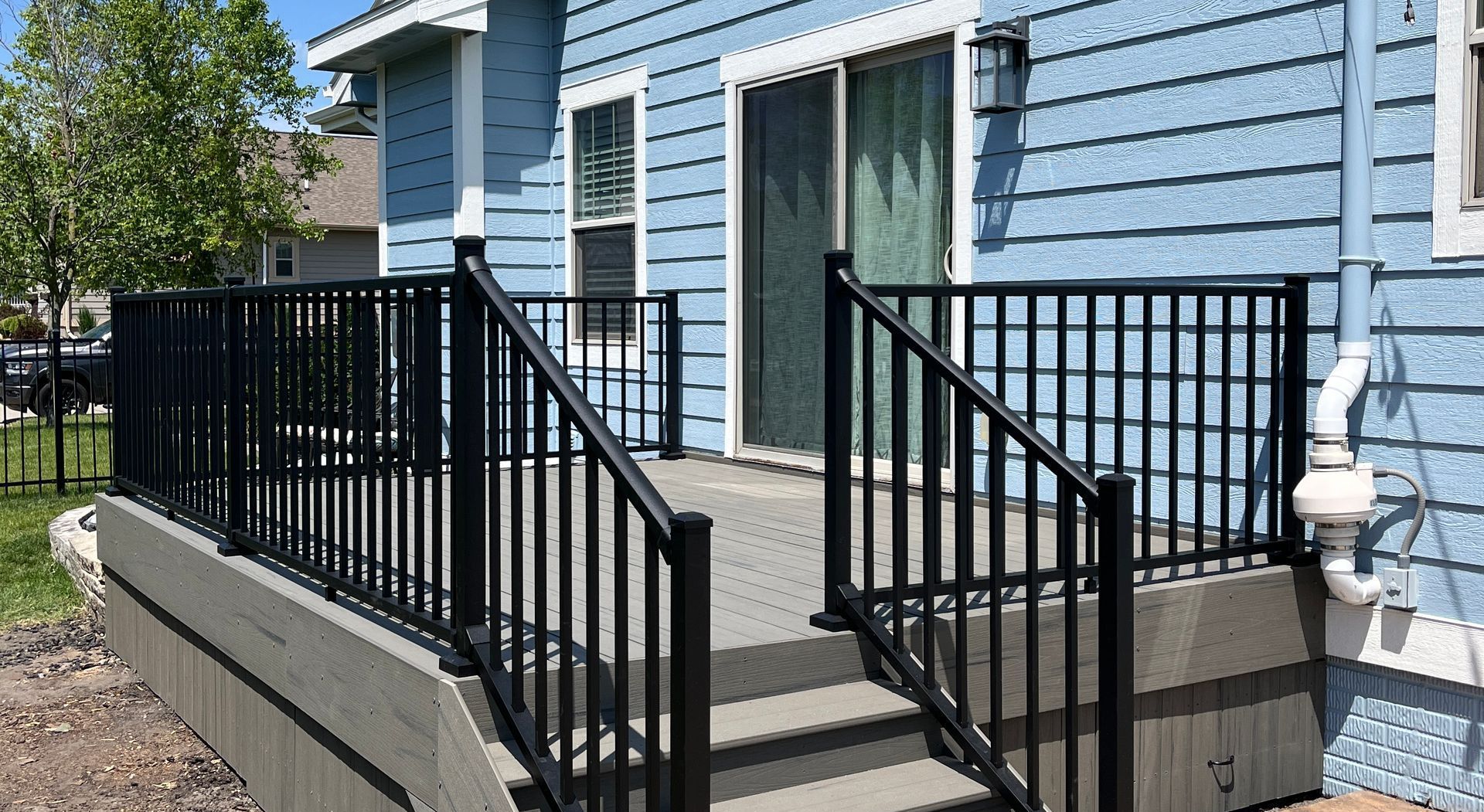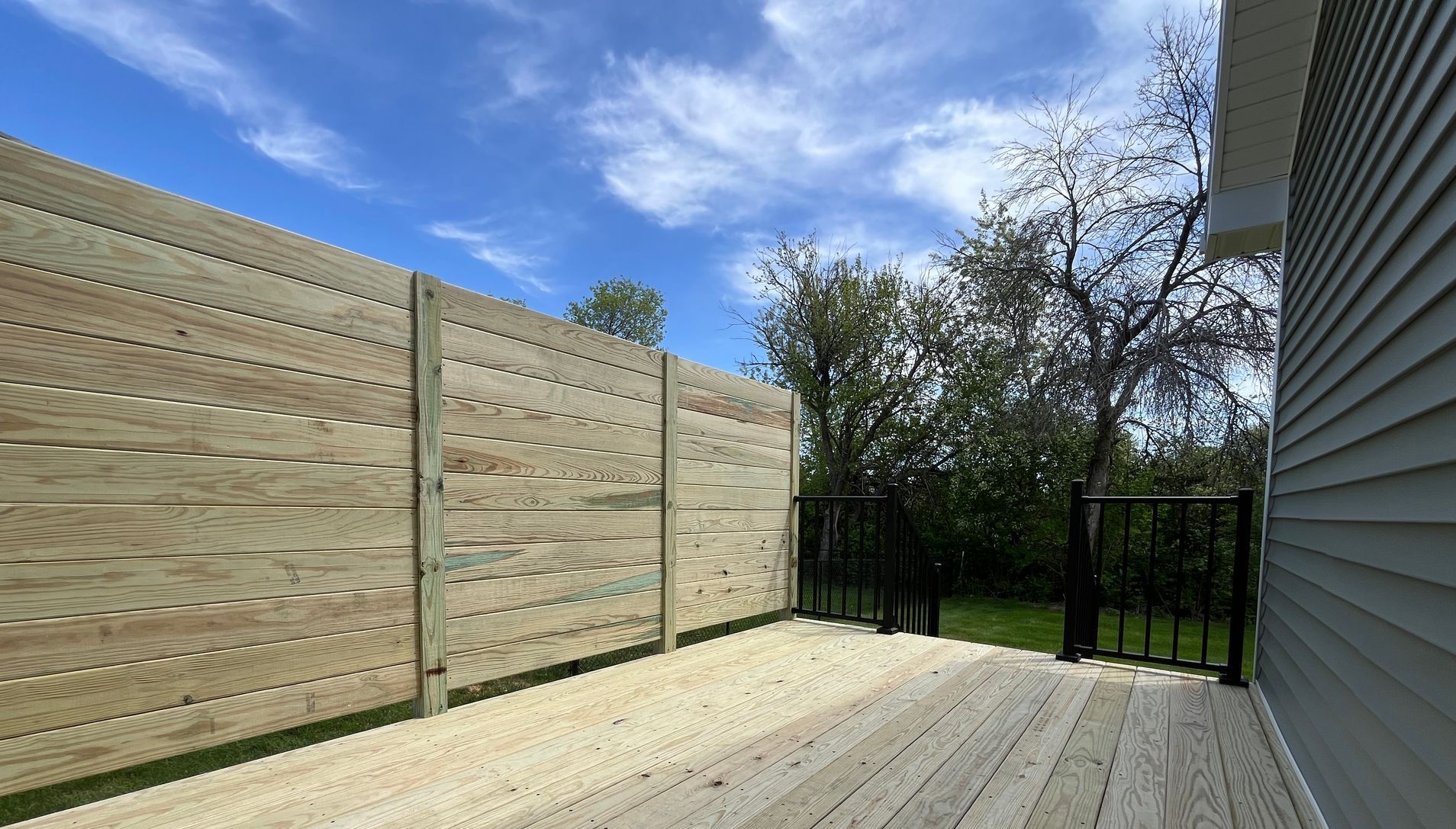Can You Mix Composite Decking with Wood? Pros and Cons for Your Outdoor Space
One of the most important decisions when designing or upgrading your outdoor living space is choosing the materials for your deck. Wood and composite decking are two of the most popular options, and each has its unique strengths. But what if you didn’t have to choose just one?
Can you mix composite decking with wood? The answer is yes—and it’s a design trend that’s gaining popularity among homeowners. For residents of Urbandale, IA, combining the two materials can be an excellent way to achieve a functional and beautiful outdoor space. At Loveless Construction, we’ve worked with homeowners to blend materials in ways that enhance their space while meeting their budget and aesthetic goals. Here’s a closer look at the pros and cons of mixing composite decking with wood for your outdoor space.
The Appeal of Mixing Composite and Wood Decking
Blending composite decking and wood isn’t just a practical choice—it’s also an opportunity to get creative with your design. Here’s why many homeowners are opting for a mix of materials:
- Cost Savings: One of the biggest reasons to combine composite decking with wood is to save money. While composite decking is durable and low-maintenance, it can be more expensive than wood. By using composite for high-traffic areas like the main deck surface and wood for accents like railings, stairs, or pergolas, you can keep costs down while still enjoying the benefits of both materials.
- Aesthetic Variety: Mixing materials allows for unique designs that stand out. Composite decking comes in a variety of colors and textures, while wood offers natural warmth and character. When combined, these materials can create striking contrasts or subtle transitions that elevate your deck’s look.
- Practicality: Each material brings its own advantages. Composite decking is resistant to moisture and rot, making it ideal for areas exposed to the elements. Wood, on the other hand, is strong and versatile, making it a great choice for structural elements or custom features.
- Sustainability Options: For eco-conscious homeowners, combining materials can reduce waste. Composite decking made from recycled materials alongside responsibly sourced wood offers a more sustainable solution than going all-in on one material.
How to Mix Composite Decking with Wood
If you’re considering a mixed-material deck, planning is key. Here are a few ways to combine composite decking and wood effectively:
1) Use Composite for Decking and Wood for Framing
A common approach is to use composite boards for the main deck surface, where durability and low maintenance are priorities, and wood for the substructure or framing. This method ensures a long-lasting surface while keeping structural costs lower.
2) Create Contrasting Features
Blending composite and wood allows you to highlight certain areas of your deck. For example, you can use composite decking for the flooring and wood for railings, benches, or pergola posts. The contrast creates a dynamic visual effect.
3) Mix Colors and Textures
Composite decking comes in a range of colors and finishes. Pairing it with wood's natural grain can add depth and dimension to your design. For instance, use composite in a sleek gray tone and pair it with warm, rich wood accents.
Pros of Mixing Composite Decking with Wood
Let’s take a closer look at why this combination might be the right choice for your outdoor space:
- Durability Where It Counts
- Composite decking is incredibly durable, resisting moisture, UV rays, and rot. By using composite in areas exposed to harsh weather conditions, you can extend the lifespan of your deck.
- Customizable Designs
- Mixing materials gives you the flexibility to create a deck that suits your personal style. You’re not limited to one look—whether you prefer a rustic vibe or a modern design, the combination of wood and composite can achieve it.
- Easier Maintenance
- Composite decking requires little maintenance compared to wood. By limiting your wood usage to decorative or structural elements, you can significantly reduce the upkeep of your deck without sacrificing aesthetics.
- Budget-Friendly Options
- As mentioned earlier, combining composite and wood can be a cost-effective solution. Composite can be reserved for the most visible or weather-exposed areas, while wood can be used in less vulnerable spots to save on costs.
Potential Cons of Mixing Composite Decking with Wood
While there are many advantages to blending these materials, it’s important to consider potential downsides:
- Uneven Aging
- Composite and wood age differently over time. Composite decking will retain its color and resist fading, while wood can weather, fade, or even warp without proper maintenance. This difference in aging can create a visual mismatch over time.
- Maintenance Requirements
- Wood requires more upkeep than composite. If your deck has both materials, you’ll need to treat and seal the wood regularly to prevent deterioration, while the composite requires little more than occasional cleaning.
- Compatibility Challenges
- Not all composite and wood materials pair well structurally. Certain types of wood may not provide the same level of support as others, and not all composites are designed to integrate seamlessly with wood. This can make installation trickier.
- Upfront Planning Required
- Blending materials requires careful planning to ensure a cohesive look. Without a clear design vision, the combination can look disjointed or inconsistent.
Should You Mix Composite Decking with Wood?
The decision to mix composite decking with wood ultimately depends on your budget, style preferences, and maintenance commitment. For homeowners in Iowa, where weather conditions can range from hot summers to snowy winters, using composite for exposed areas and wood for accents or structures can strike the perfect balance between durability and beauty.
At Loveless Construction, we recommend working closely with a professional deck builder to explore your options and ensure the materials you choose complement each other both visually and functionally.
Tips for a Successful Mixed-Material Deck
If you’re ready to start planning your deck, here are some tips for a successful project:
- Choose Complementary Materials: Select wood and composite options that complement each other in terms of color, texture, and durability.
- Plan for Maintenance: Understand the upkeep requirements of both materials and the budget for regular maintenance.
- Consider Climate: Take your local weather into account when deciding where to use composite versus wood.
- Work with Professionals: Partnering with an experienced contractor, like Loveless Construction, ensures your deck is built to last and looks stunning.
Create Your Perfect Deck with Loveless Construction
So, can you mix composite decking with wood? Absolutely—and for many homeowners in Urbandale, IA, it’s the best way to achieve a unique, cost-effective design that balances durability and style. By combining the strengths of both materials, you can create a deck that enhances your outdoor space and fits your budget.
At Loveless Construction, we specialize in crafting custom decks that reflect your vision and stand the test of time. Whether you’re considering a mixed-material deck or exploring other options, we’re here to help every step of the way. Contact us today to schedule a consultation and start building the deck of your dreams!
Useful Links
Working Hours
- Mon - Fri
- -
- Saturday
- -
- Sunday
- Closed
All Rights Reserved | Loveless Construction. | Sitemap


